Introduction to the flavor description characteristics of Huakui coffee beans in Gujimbela, Ethiopia
Ethiopia is the birthplace of coffee, and many varieties of coffee have been extended from here. When it comes to Ethiopia, many friends may think of the bright sour, fresh coffee-flavored water to wash Yega Chefe coffee, or they may have regarded Yega Chefe as the representative of Essiobe coffee beans. Although baristas on Qianjie Coffee like washed Yegashefi coffee, Ethiopia is actually based on sun treatment, and even now, Ethiopian sun treatment accounts for about 70% of the country's output. So when it comes to the sun, of course we have to talk about Ethiopian Sakui coffee, which is a favorite of Qianjie coffee.
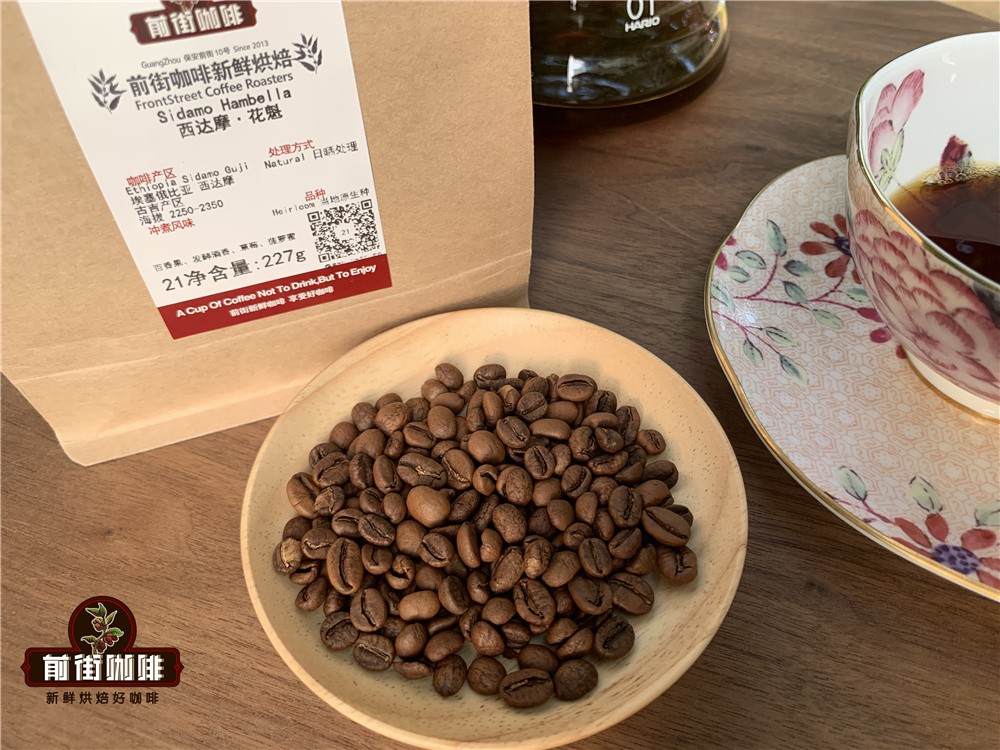
Why are the coffee beans called "Sakuran"?
Sakuran sounds like the name of the king of flowers. It's very beautiful. Sakuran is the number one geisha in Chinese culture, but what does this name mean in coffee beans? How did it come from? The original name of Huakui coffee bean is Humbela, which is named by domestic raw bean merchants. It is known as Huakui in China because this batch of raw beans was introduced by raw bean traders in Beijing, and because in the 2017 China Coffee Division Competition, Li Jianfei stood out from many Rose Summer Coffee contestants and won the runner-up. You know, almost all the beans used in that year's competition were Rose Summer, and suddenly came out the legend that a non-rose summer coffee bean beat the competition. It can be said that it is of great significance, but also because the English Geisha of Rosa is homonym with the Japanese word for geisha, in order to highlight the status of this coffee bean, it is named Sakuran, which means the chief of geisha.
Humbera coffee beans are generally named after their place of origin, while "Sakuran" is actually produced in a Hambella producing area in Ethiopia's Guji region. Hambella is located in Guji, the largest coffee producing area in Ethiopia, and the administration is subordinate to the state of Oromia. The Guji producing area, which once belonged to the Sidamo producing area, has been independent into a new producing area by the Ethiopian Commodity Exchange (ECX) in 2010. The most famous coffee bean in Guji area is Sakui Coffee Bean. In 2017, TOH (Ethiopia National Taste of Harvest Competition) won the championship for its outstanding strawberry cream flavor. But not all products produced in Humbera can be called "Sakuran". Only sun-dried coffee beans from the "Buku Abel" processing plant can be called Sakuran.
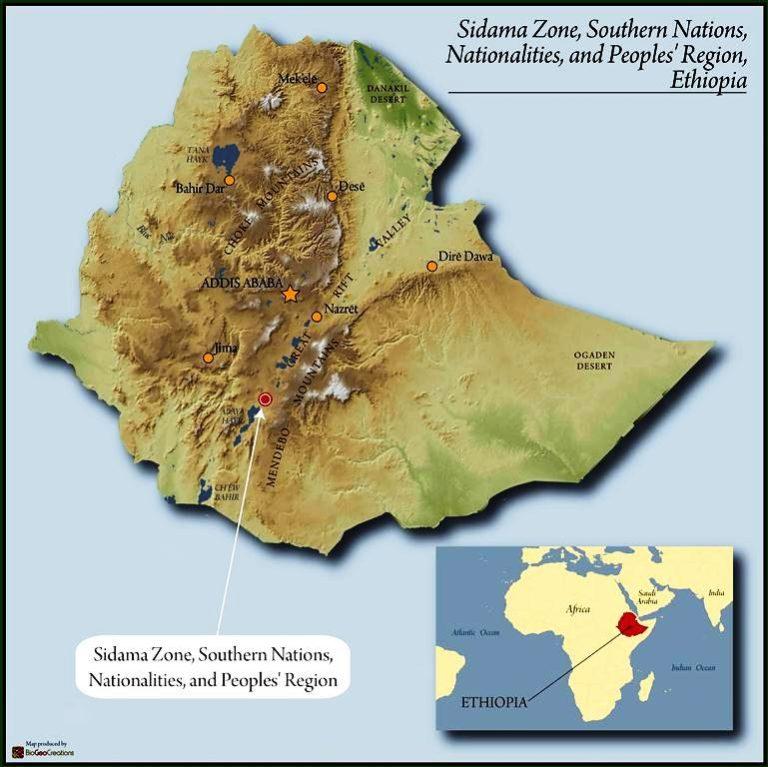
The west of Humbera is across the mountain from Yega Ficher. The two producing areas are separated by a highland with an elevation of 3200 meters and a width of about 30 kilometers. The east and south are bordered by Shakiso, Uraja and Kolasha in Guji, respectively. It is the highest coffee producing area in Ethiopia. At present, there are about 20 processing plants of various sizes in Humbera production area.
Buku processing plant Huakui coffee bean treatment Buku processing plant is located in buku abel village, which is 2200 meters above sea level. From the beginning of cultivation, it has been chosen as a noble "family environment"-rich humus reddish brown soil, and given shade and care to "Enset" tree species, so that Sakui receives sufficient sunlight and produces rich flavor without consuming too much nutrients, thus retaining more essence in the inside of the coffee fruit. In the harvest and treatment season (December-January), its unique growth environment and natural climate created the unique flavor of Huakui.
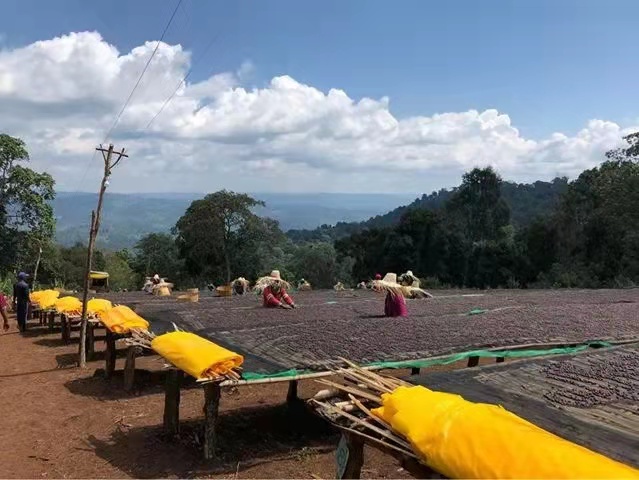
Buku processing plant is collected in the picked red fructose content of more than 30 before starting the sun treatment. In the first two days of the sun, we should ensure the humidity of the red fruit so that the fructose begins to ferment fully. At the same time, the high-altitude geographical location, so that the night temperature of the treatment plant can be reduced to about 12 degrees Celsius, and will not produce the smell of excessive fermentation because the temperature is too high. When the temperature is relatively high at noon, we will cover in time to prevent sunburn of red fruit. Choose only all red fruits, fully ripe coffee cherries, all manual picking, African scaffolding to dry, limit the thickness of the fruit layer and turn it regularly for 24 hours to ensure uniform sun exposure and ventilation and a more accurate grasp of the fermentation degree. Qianjie believes that because Huakui coffee beans are fully ripe coffee berries with high sugar content, the sugar in pectin will be absorbed by coffee beans by sun drying, so Huakui coffee beans will be sweeter than coffee beans in other producing areas of Sidamo.
Huakui coffee variety
Ethiopia, as the birthplace of coffee, has a large number of coffee varieties, and the coffee variety of Sakui also claims to be the name of the native species. Why is there such a phenomenon? According to Qianjie, there are many factors contributing to this phenomenon, including a wide range of varieties, small farmers' planting patterns, mixed harvesting and mixed treatment, and the early Ethiopian bean grading system, so they are collectively called Heirloom native species. This is the main reason why Ethiopian beans seem to be of different sizes.
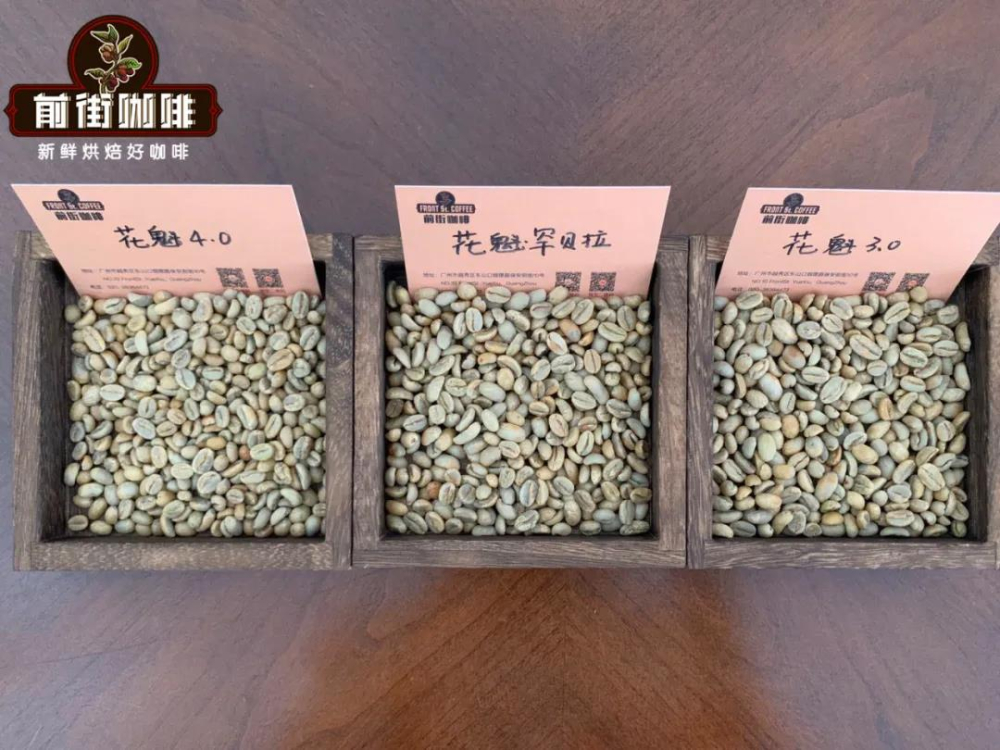
How to distinguish between Huakui coffee beans?
When you search for Sakuran coffee beans, you will find Sakui 2.0, 3.0, 4.0. Why are there so many numbers? Is there any difference? What's the difference in flavor? Qianjie has also written about the differences between the various versions of Sakuran before, so today Qianjie will once again popularize the differences between the various versions of Sakuran coffee beans.
Huakui coffee beans are also a kind of crops, of course, it is also related to the climate, so the flavor will be a little different from year to year. First of all, let's go back to 2017, when a sun-dried coffee bean from DW's "Buku Aebl" processing plant won the champion of the TOH sunburn group, when Chinese raw bean merchants introduced the champion bean to China and named it "Sakuran". DW has increased to four processing plants in Humbera, namely "Buku Abel", "Buku Saysay", "Haro Soresa" and "Tirtiro Goye". Strictly speaking, only the sun-cured coffee beans treated by the "Buku Abel" processing plant can be called Sakuran coffee beans. The naming of Sakui X.0 is based on the year. It launched Sakui 2.0 in 2018, Sakuran 3.0 and 3.1 in 2019, Sakui 4.0 in 2020, Sakui 5.0 in 2021 and Sakui 6.0 in 2022.
In 2021, the latest Sakuran 5.0 has been released, and in addition to Sakuran 5.0, there is also a series called Xiaozhikui. Unlike the X.0 series, Xiaogui coffee beans do not change with the year. In fact, Qianjie picked out small granules of coffee beans in Huakui 2.0 and 3.1, and found that they have the strawberry flavor of the early generation of Sakuri in 2017. It is considered that the unique aroma and sweetness of Huakui mainly come from these small granulated coffee beans. In 4.0, there are also some batches of Huakui coffee with small and medium granules, so those batches of Huakui coffee have very good aroma and sweetness. Until this year, DW began to subdivide the small granules of coffee beans to form an independent product line of small Huakui coffee beans. On the other hand, Qianjie compared the flavor of Huakui 5.0 and Xiaogui coffee, and found that the sweetness of Xiaogui coffee was more obvious than that of strawberry 5.0, while the citrus fruit of Huakui 5.0 coffee was more comfortable to drink.

In 2022, Hongshun launched the Huakui 6.0 series, and Qianjie also got the coffee raw beans of Huakui 6.0 earlier. However, the appearance of this batch of raw beans is slightly flattened and withered compared with the previous ones, and after baking, there are a lot of flat beans and shell beans.
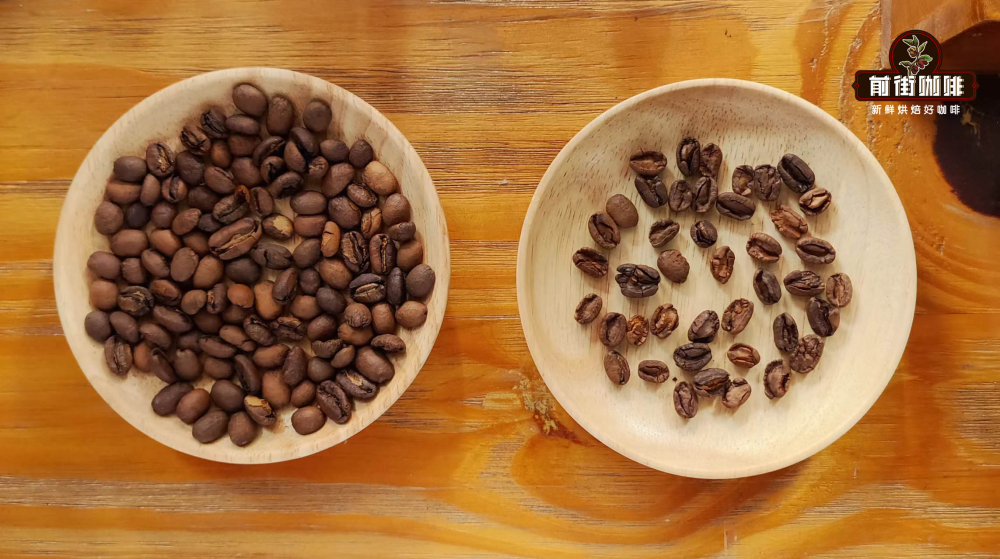
The picture above shows the irregular coffee beans selected from 15g coffee beans randomly selected from the roasted Sakui 6.0 in Qianjie. The quantity is much more than in previous years. Out of this consideration, Qianjie decided not to sell Sakui 6.0, but to continue to sell Sakui 5.0.
Some friends may wonder, isn't it true that every year there is a new generation? Will Huakui 5.0 be out of season beans? At this point, please rest assured that the reason why Sakui uses the X.0 name is mainly because the original Sakui has a strong strawberry flavor, but in the subsequent production season, this strawberry flavor became lighter and lighter, and by 4.0 series, the strawberry flavor disappeared directly.
When it comes to the 5.0 series, the flavor of Huakui 5.0 is full of orange and mango juice, which is loved by everyone. As a result, in 2022, in addition to the launch of the new 6.0 series, but also retained the 5.0 series, these coffee beans are new season coffee beans.
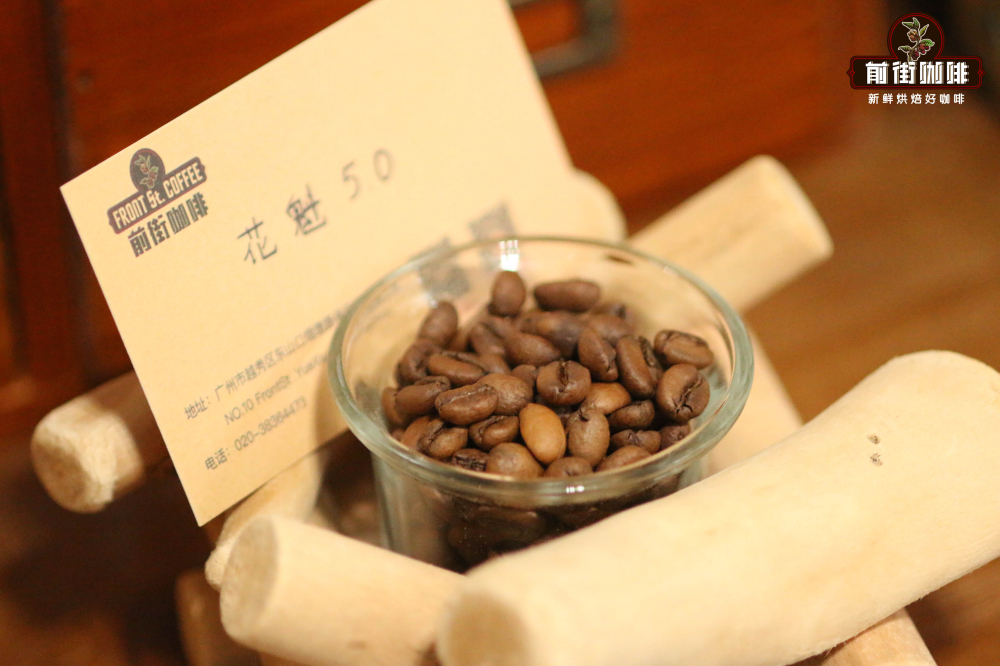
Qianjie coffee brewing suggestion Qianjie recommends using freshly roasted coffee beans for brewing, so that you can maximize the rich flavor of coffee. The coffee beans shipped in Qianjie are all roasted within 5 days, because Qianjie is well aware that the freshness of coffee beans has a great impact on the flavor. The purpose of Qianjie roasting is "freshly roasted coffee", so that every guest who places an order is the freshest coffee when he receives it. The bean cultivation period of coffee is about 4-7 days, so when the guest gets it, it is the time when the flavor is the best.
Filter cup: Hario V60, water temperature: 90 ℃, powder quantity: 15g, ratio of powder to water: 1:15, grindness: medium and fine grinding (Chinese standard No. 20 sieve pass rate 80%) using staged extraction, steaming with 2 times the amount of coffee powder, that is, 30 grams of water for 30 seconds, small flow circle water injection to 125g, continue water injection to 225g, remove the filter cup after the drop of the filter cup, and time is measured from the beginning of water injection. The extraction time is 2: 39. 00 ".
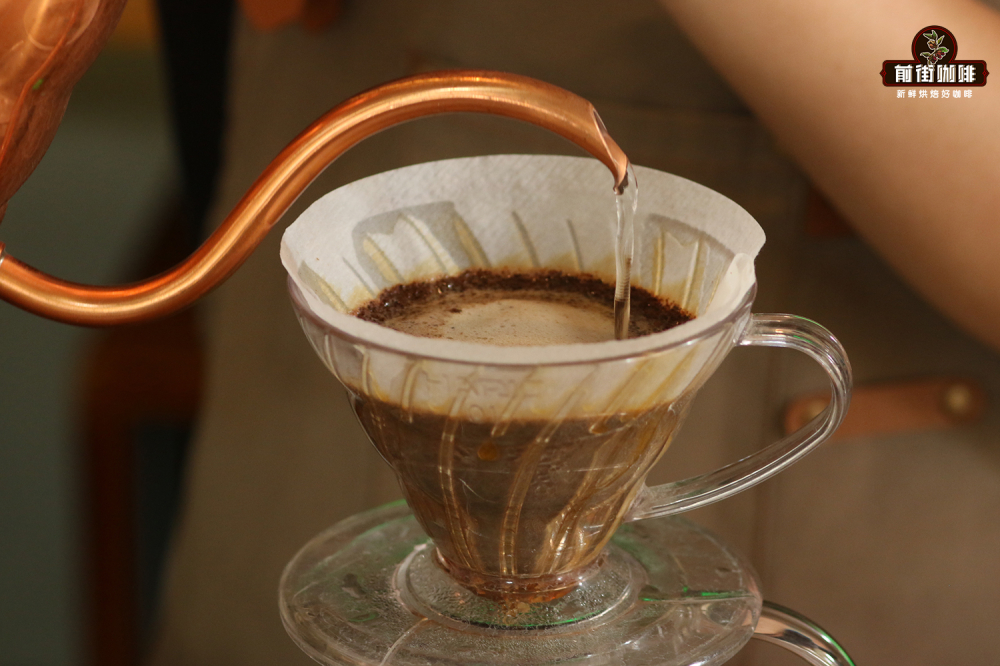
Flavor description
[Sakui G1]: smooth, passion fruit, fermented wine, jackfruit, strawberry.
[Sakuran 2.0]: the overall taste is clean, berry aromas will be more obvious, and with nutty aromas, the taste will be richer.
[Sakuran 3.0]: light strawberry jam, black tea, sweet aftertaste.
[Sakui 3.1]: flower fragrance, cream, tropical fruit, caramel, Huigan lasting.
[Sakui 4.0]: sour citrus, full berry juice, lemon black tea, long-lasting sweetness.
[Xiaogui]: sweet aroma of berries, creamy strawberries, passion fruits, rich sweetness and full taste.
[Sakui 5.0]: the fragrance of flowers, the sour and sweet feelings of berries, citrus and plums, mango juice, honey and the aftertaste of black tea.
[Huakui 6.0]: full berry juice, black tea aftertaste.
The above is about the flavor differences of each version of Sakuran, of course, this is just a coffee bean in Ethiopia, and there are many single beans in Ethiopia, while Qianjie coffee has more than 50 kinds of single beans, and there is a story behind each kind of coffee beans. maybe you'll fall in love with it.
Professional coffee knowledge exchange more coffee bean information please follow the coffee workshop (Wechat official account cafe_style)
For more boutique coffee beans, please add private Qianjie coffee on Wechat. WeChat account: qjcoffeex
Important Notice :
前街咖啡 FrontStreet Coffee has moved to new addredd:
FrontStreet Coffee Address: 315,Donghua East Road,GuangZhou
Tel:020 38364473
- Prev

What is the origin of the world's top coffee? evaluation of the flavor of Panamanian coffee producing areas and introduction of the top producing areas of boutique coffee beans.
Today, let's introduce the world's top coffee producer Panama, why it is said to be the world's top producer? One of the most popular coffee in recent years definitely has a place for Rose Summer Coffee, and Rose Summer Coffee is most famous for its Jade Manor, which first found Rose Summer Coffee.
- Next

How do you make iced American coffee? Teach you to make coffee that can help you keep fit and lose weight. why can coffee help reduce fat and swelling?
The weather is getting hotter and hotter, iced coffee has become the most popular item in cafes. Today, we will teach you how to make iced American coffee. What is American coffee? American coffee, known as Americano in English, is traditionally a black coffee made by using a drip filter coffee pot, because it usually takes a relatively long time to extract (about four to four.
Related
- Beginners will see the "Coffee pull flower" guide!
- What is the difference between ice blog purified milk and ordinary milk coffee?
- Why is the Philippines the largest producer of crops in Liberia?
- For coffee extraction, should the fine powder be retained?
- How does extracted espresso fill pressed powder? How much strength does it take to press the powder?
- How to make jasmine cold extract coffee? Is the jasmine + latte good?
- Will this little toy really make the coffee taste better? How does Lily Drip affect coffee extraction?
- Will the action of slapping the filter cup also affect coffee extraction?
- What's the difference between powder-to-water ratio and powder-to-liquid ratio?
- What is the Ethiopian local species? What does it have to do with Heirloom native species?

